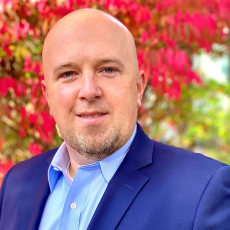How have the last few years been for Nuvalent from a product discovery and clinical testing point of view?
The last few years have been a transformative time for Nuvalent. We emerged from stealth in 2021 with a pipeline of novel molecules for patients with cancer that were discovered in-house at Nuvalent. Since then, we have rapidly advanced our two lead compounds through IND into Phase 1 clinical trials and presented preliminary Phase 1 data for our first lead compound which provided early proof-of-concept for our approach. I’m incredibly proud of our team for achieving this smooth transition to an integrated research and development organization.
Central to our growth has been a commitment to our values of collaboration, empowerment, and patient impact. At our core, we are a team of chemists and experienced drug developers with a shared desire to make a real impact for patients. This drives us to act with a sense of urgency and discipline to only advance projects that we believe could have the capability to address true patient needs as potential best-in-class or potential first-in-class solutions.
To do this, we start each program through close collaboration with physician-scientists who have real-world experience with treating patients today, with the goal of identifying the medical challenges that remain with currently approved therapies. We apply our deep expertise in chemistry and structure-based drug discovery and in drug development to translate these medical challenges to a comprehensive target product profile. Achieving this clarity up front enables us to stay laser focused on clear goals for each program, where only drug candidates that demonstrate potential to achieve all of the target characteristics are advanced into clinical development, and development strategies can be proactively designed around areas of target differentiation.
Our approach is designed to optimize for efficient advancement of programs, but we recognize that despite anyone’s best efforts, both cancer and drug discovery can be incredibly humbling. Empowerment becomes the glue that holds us together as a team. We strive to foster a culture where each individual is empowered to make an impact and setbacks are not failures as long as we continue our commitment to making data-driven decisions.

We feel fortunate to carry a lot of positive momentum into 2023 and look forward to continued advancement toward our vision of delivering precisely targeted therapies to patients with cancer.
Selecting the right patients for clinical trials can sometimes be a difficult task. How have you experienced this situation?
We’ve found that our approach of collaborating with physician-scientists continues to impact our programs as they move into clinical development. Many of these physician-scientists are also clinical investigators at major medical institutions across the world. Because they already have a deep understanding of the goals of the program and the pre-clinical data supporting DC nomination, there is an increased awareness of patients that could be appropriate for our trials.
In addition, we are so grateful to have such strong relationships with patient advocacy groups that are incredibly plugged in with the patients we strive to help. Through their partnership and feedback, we are able to better align our development goals with the needs of patients while also generating awareness of our clinical trials to help push our investigational therapies forward.
The pandemic was transformational for the pharma industry. How do you see it changed after these events, especially from an innovation perspective?
The pandemic certainly brought increased public awareness of the pharma industry and prompted widespread education on concepts such as clinical trials, mutations in diseases, and diagnostics. Importantly, it also demonstrated the potential of rapid innovation, as well as the value of continued testing and vigilance as diseases evolve. These concepts are all very relevant for cancer research, and I hope that we will be able to continue to build on this opportunity to foster a more informed and active patient population.
During that same period, we realized that working from all over the world can actually help us expand the scope of who we are as a company. As a result, we expanded our footprint beyond Massachusetts and gained much more flexibility in our business model. All of our employees continue to work remotely, meaning we aren’t restrained to hire based on geography. We can select the best talent to continue building our team and benefit from broadened perspectives in support of continued rapid innovation.
The Inflation Reduction Act is expected to lay new grounds for the pharma industry. How do you believe it will shape this environment moving forward?
I believe the pharma industry and policy makers have a shared fundamental goal – to make a positive impact for patients. If we are able to keep the patients’ best interest in focus, I hope the outcome will be an environment that is better able to deliver the most effective solutions in the quickest way to as many patients as possible.
What are the main objectives that you would like to achieve with priority in the following couple of years?
Our vision is to become a company able to discover, develop, and deliver a pipeline of precisely targeted therapies for patients with cancer.
Our immediate priorities are advancement of our parallel lead programs for ROS1 and ALK-positive non-small cell lung cancer through Phase 1 and into Phase 2 of clinical development, where we could have the opportunity to explore clinical activity in a broader set of patients and hopefully generate data that has the potential to support registration. We are also working toward advancement of our third program, designed for patients with cancers driven by HER2 Exon 20 insertion mutations, into clinical development. In addition, as our goal is to keep innovating, we continue to invest heavily in our early research capabilities to expand our discovery pipeline.
Cancer is a disease that has touched us all, and we remain committed to the discovery and advancement of new therapies that have the potential to bring new hope to the patients and their loved ones.





